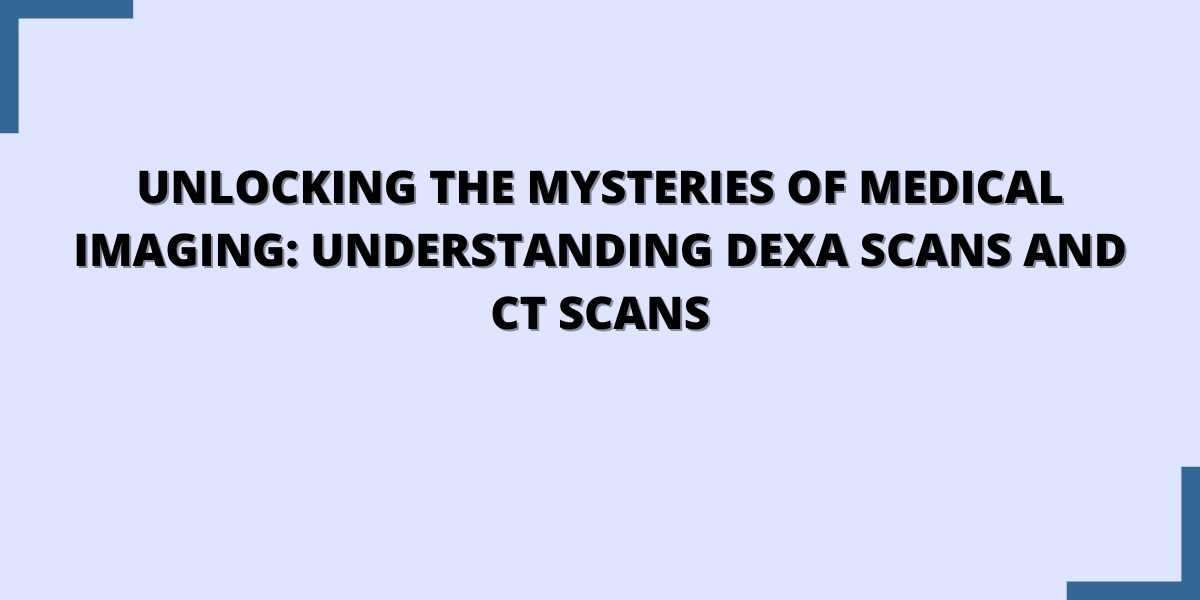In the intricate world of medical diagnostics, two commonly utilized imaging techniques stand out: DEXA scans and CT scans. These imaging modalities play pivotal roles in diagnosing a multitude of conditions, aiding healthcare professionals in providing accurate diagnoses and tailored treatment plans. In this article, we delve into the essence of DEXA scans and CT scans, exploring their distinct purposes, procedures, and significance in healthcare.
Understanding DEXA Scans:
DEXA, short for Dual-Energy X-ray Absorptiometry, is a specialized imaging technique primarily used to measure bone mineral density (BMD). It serves as the gold standard for diagnosing osteoporosis, a condition characterized by weakened and fragile bones, prone to fractures. DEXA scans employ low doses of X-rays to produce detailed images of the spine, hip, or other bones, enabling healthcare providers to assess bone density levels accurately.
The procedure for a DEXA scan is swift and non-invasive, typically lasting around 10 to 30 minutes, depending on the areas being scanned. Patients lie comfortably on a table as the scanner arm passes over the body, emitting X-rays of two distinct energy levels. The discrepancy in X-ray absorption between bone and soft tissue allows for precise measurements of bone density.
DEXA scan results are presented in the form of T-scores, which compare an individual's BMD to that of a healthy young adult. A T-score of -1 and above indicates normal bone density, while scores between -1 and -2.5 signify osteopenia (low bone density) and scores of -2.5 or lower suggest osteoporosis.
Exploring CT Scans:
CT, or Computed Tomography, scans utilize a combination of X-rays and computer technology to generate cross-sectional images of the body. Unlike traditional X-rays, CT scans provide detailed views of internal structures, including organs, blood vessels, and bones, offering valuable insights into various medical conditions.
The versatility of CT scans makes them indispensable in diagnosing a wide array of conditions, such as tumors, infections, traumatic injuries, and vascular diseases. CT scans are particularly useful for detecting abnormalities in the head, chest, abdomen, and pelvis, aiding clinicians in formulating accurate diagnoses and treatment plans.
During a CT scan, patients lie on a motorized table that moves through a doughnut-shaped machine called a CT scanner. As the table advances, X-ray beams rotate around the body, capturing multiple images from different angles. Advanced computer software reconstructs these images into detailed cross-sectional views, which are then interpreted by radiologists or other healthcare professionals.
Finding CT Scan Facilities Near You:
If you're in need of a CT scan, locating a reputable imaging facility nearby is essential. A simple online search using the keywords "CT scan near me" can yield a list of imaging centers in your vicinity. Additionally, consulting with your healthcare provider can provide valuable guidance and recommendations regarding reputable facilities for CT scans.
Conclusion:
In the realm of medical imaging, DEXA scans and CT scans play indispensable roles in diagnosing and managing a myriad of medical conditions. Whether assessing bone density with a DEXA scan or obtaining detailed anatomical images with a CT scan, these imaging modalities empower healthcare professionals to deliver timely and accurate care to their patients. By understanding the principles and applications of DEXA scans and CT scans, individuals can navigate their healthcare journeys with greater knowledge and confidence.



